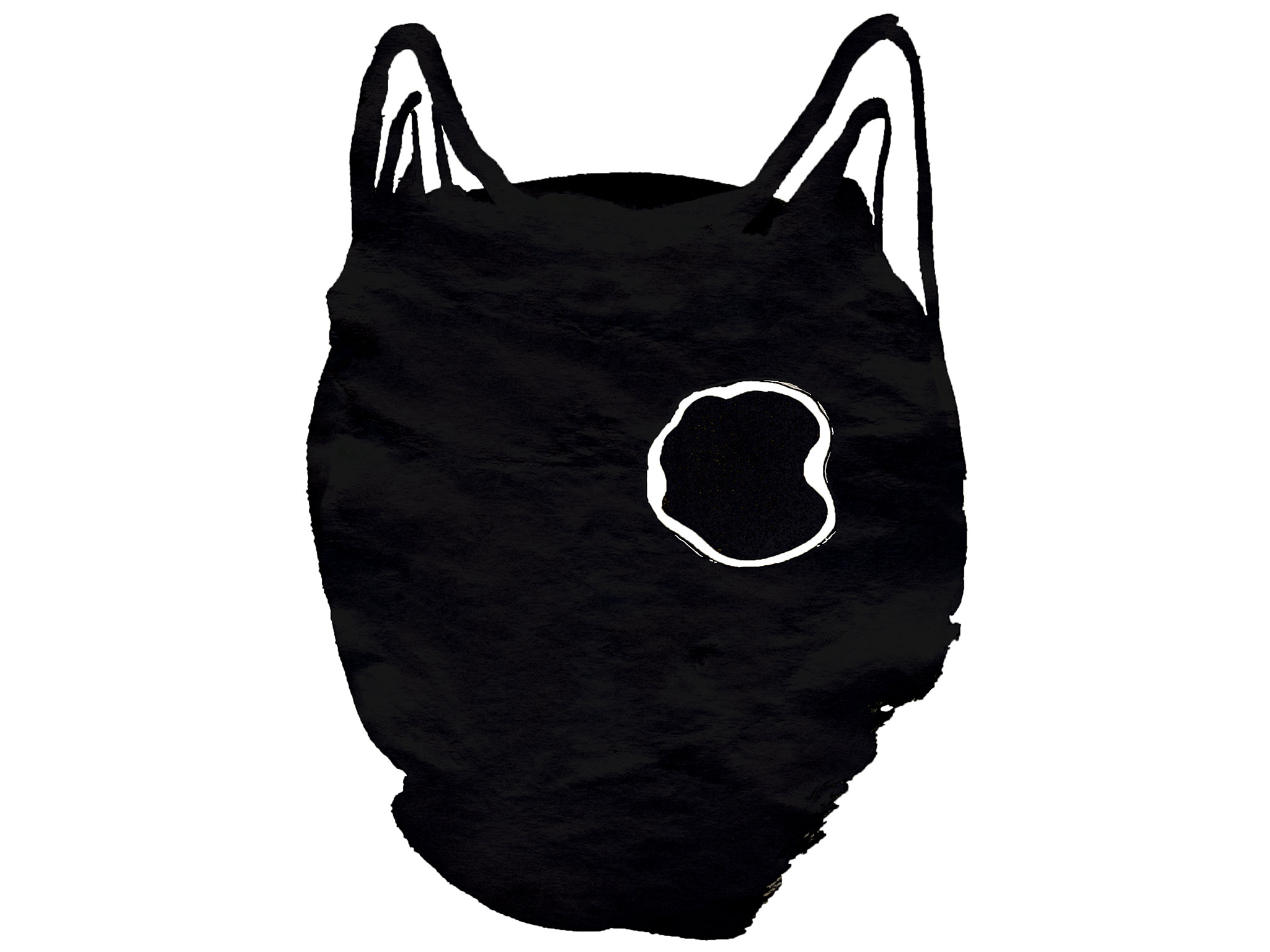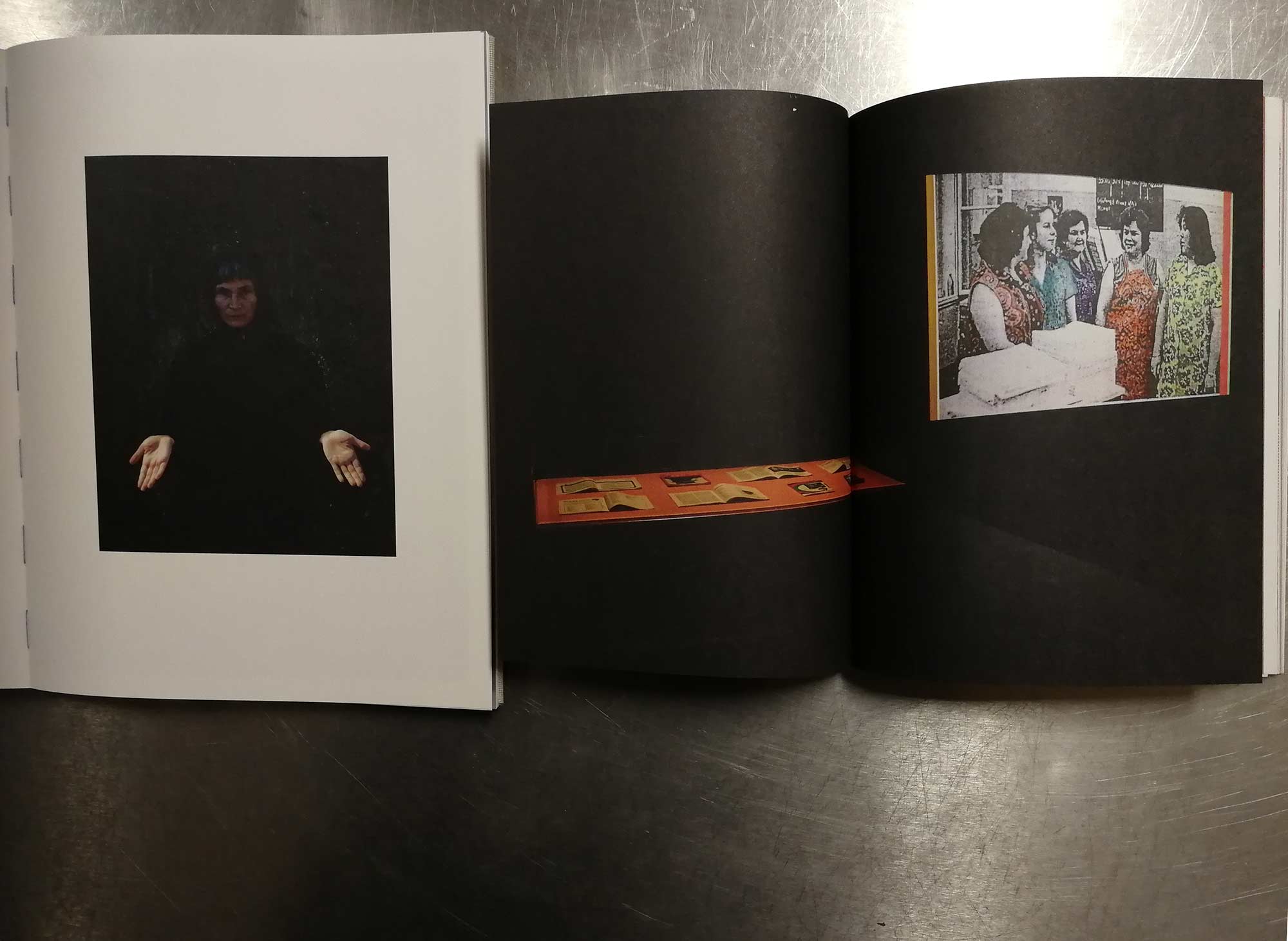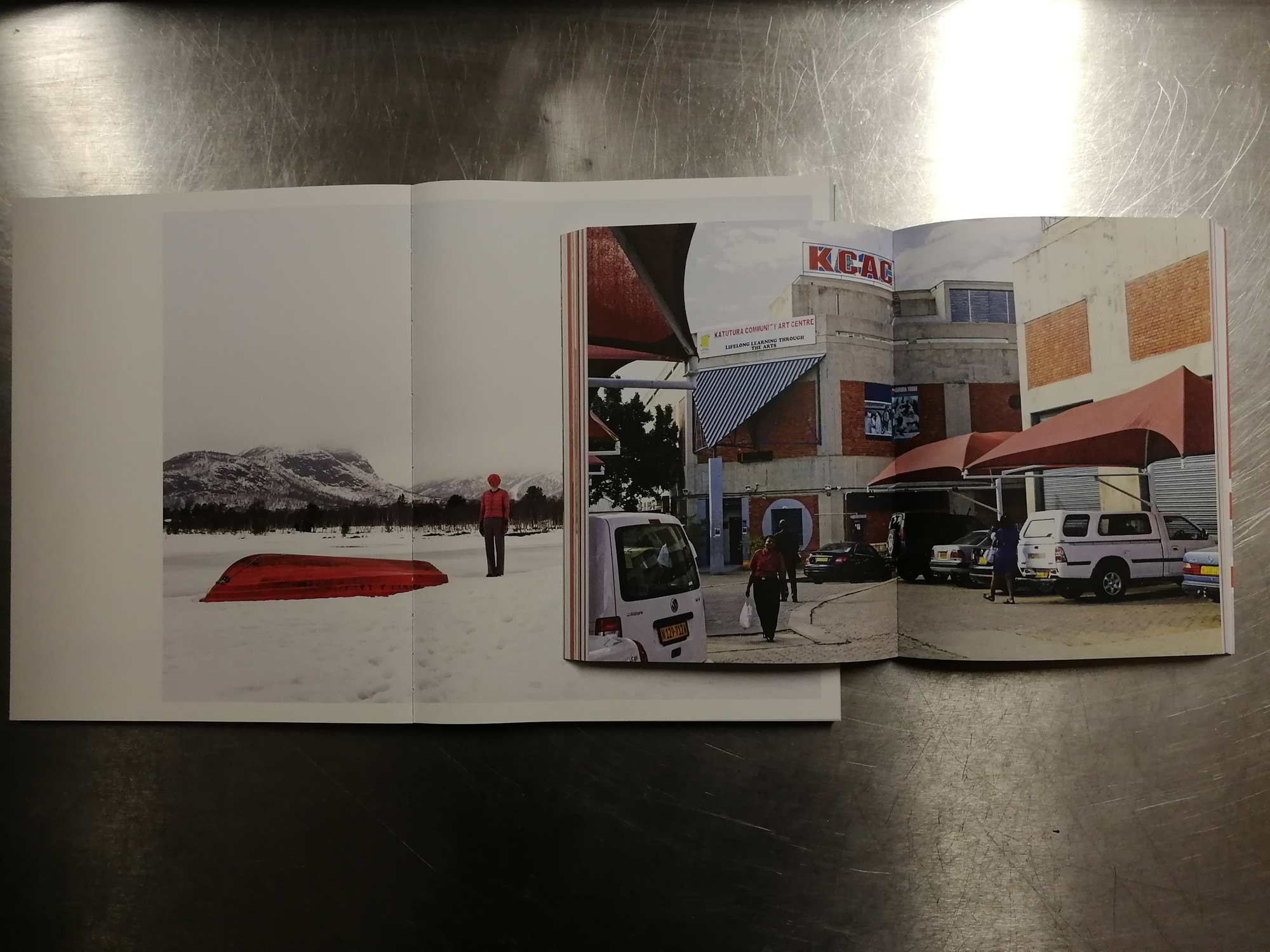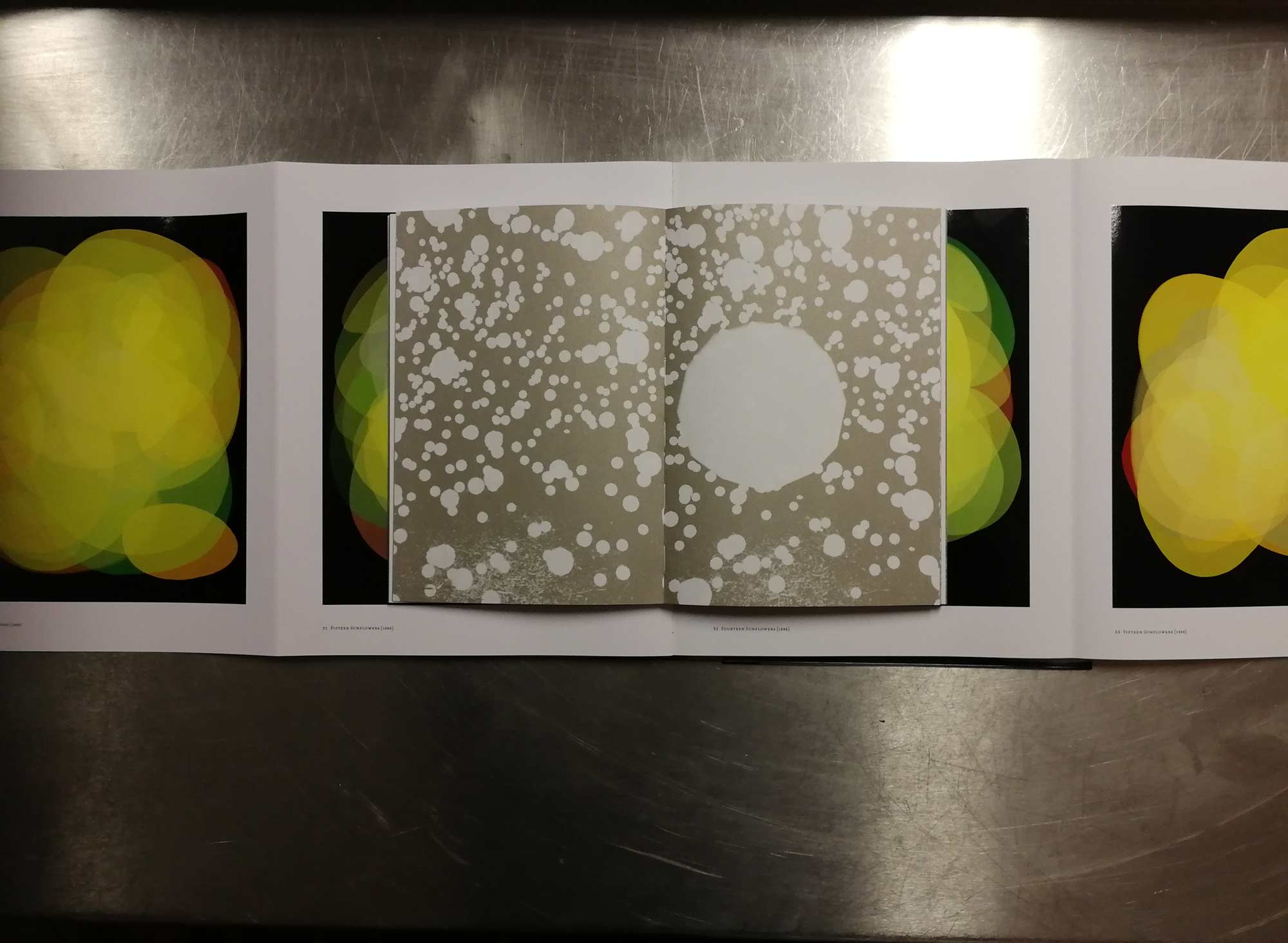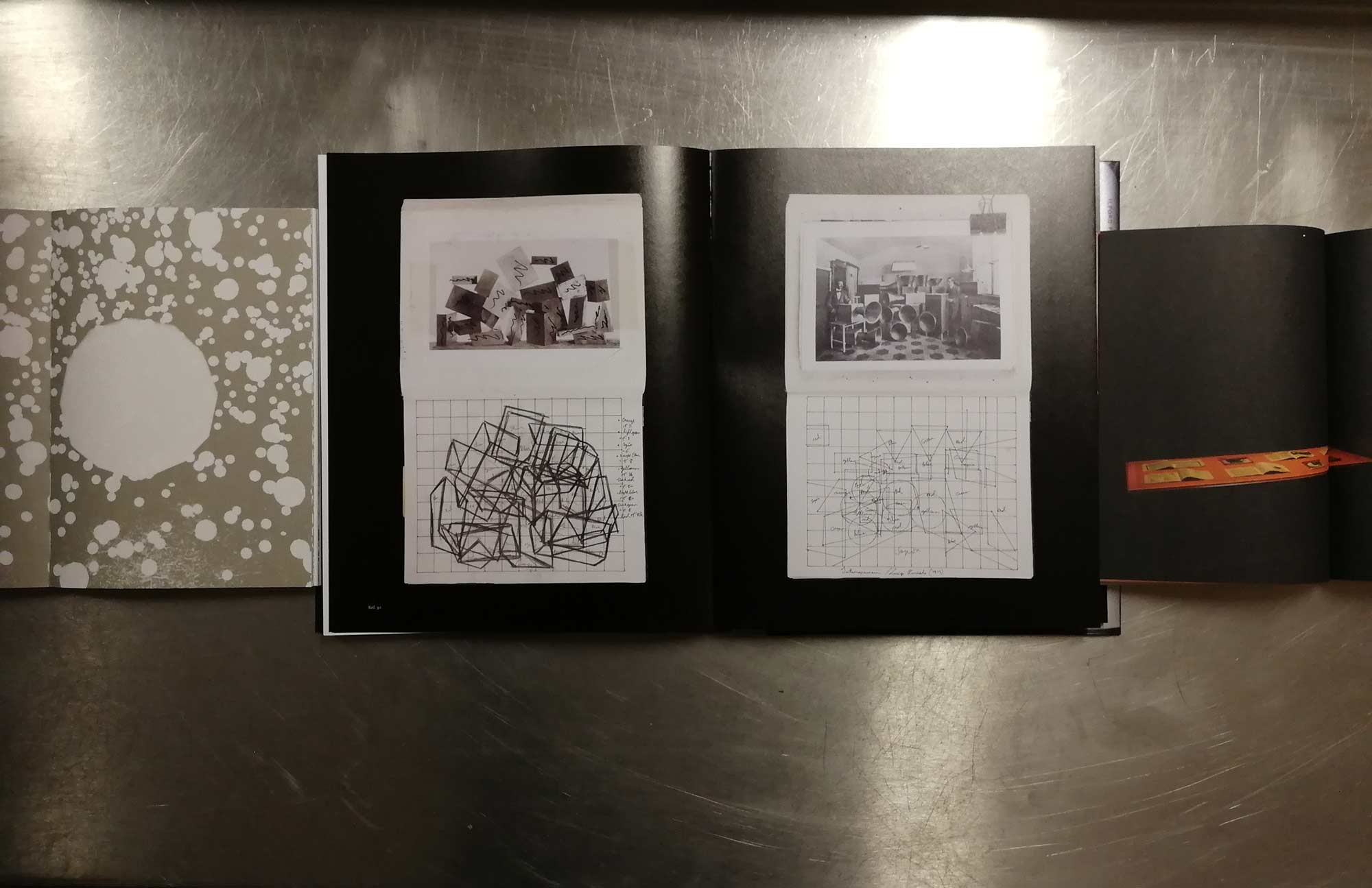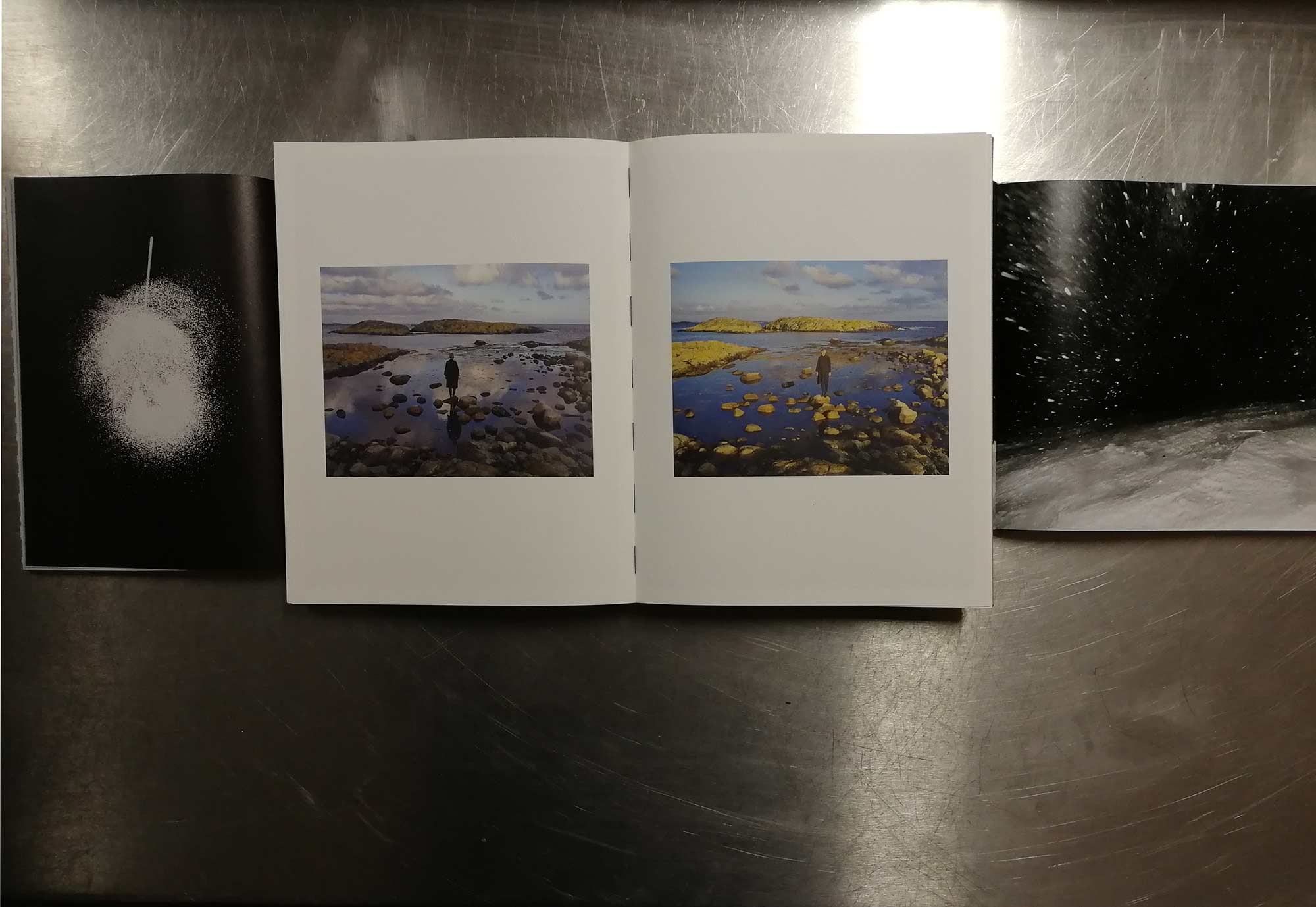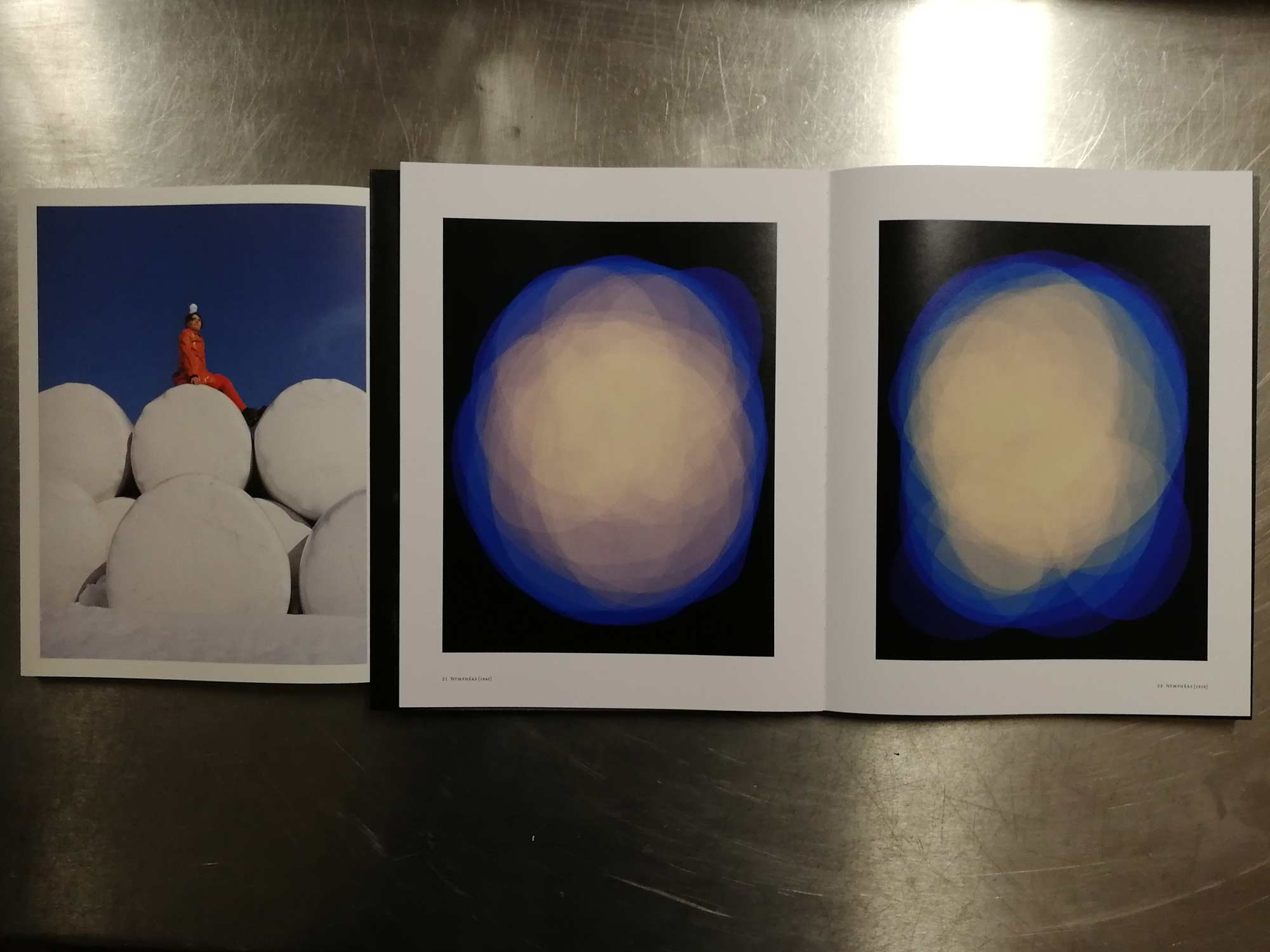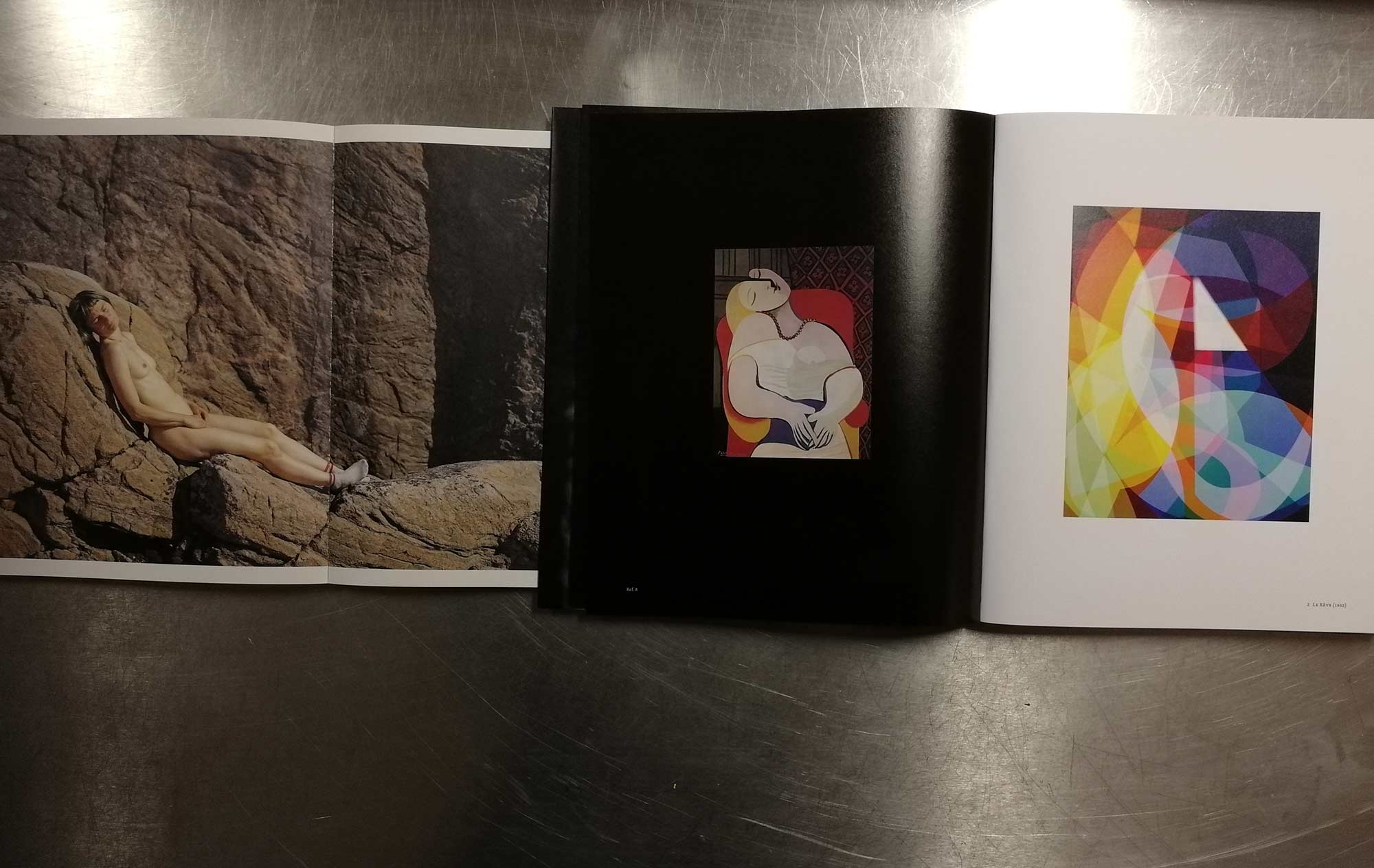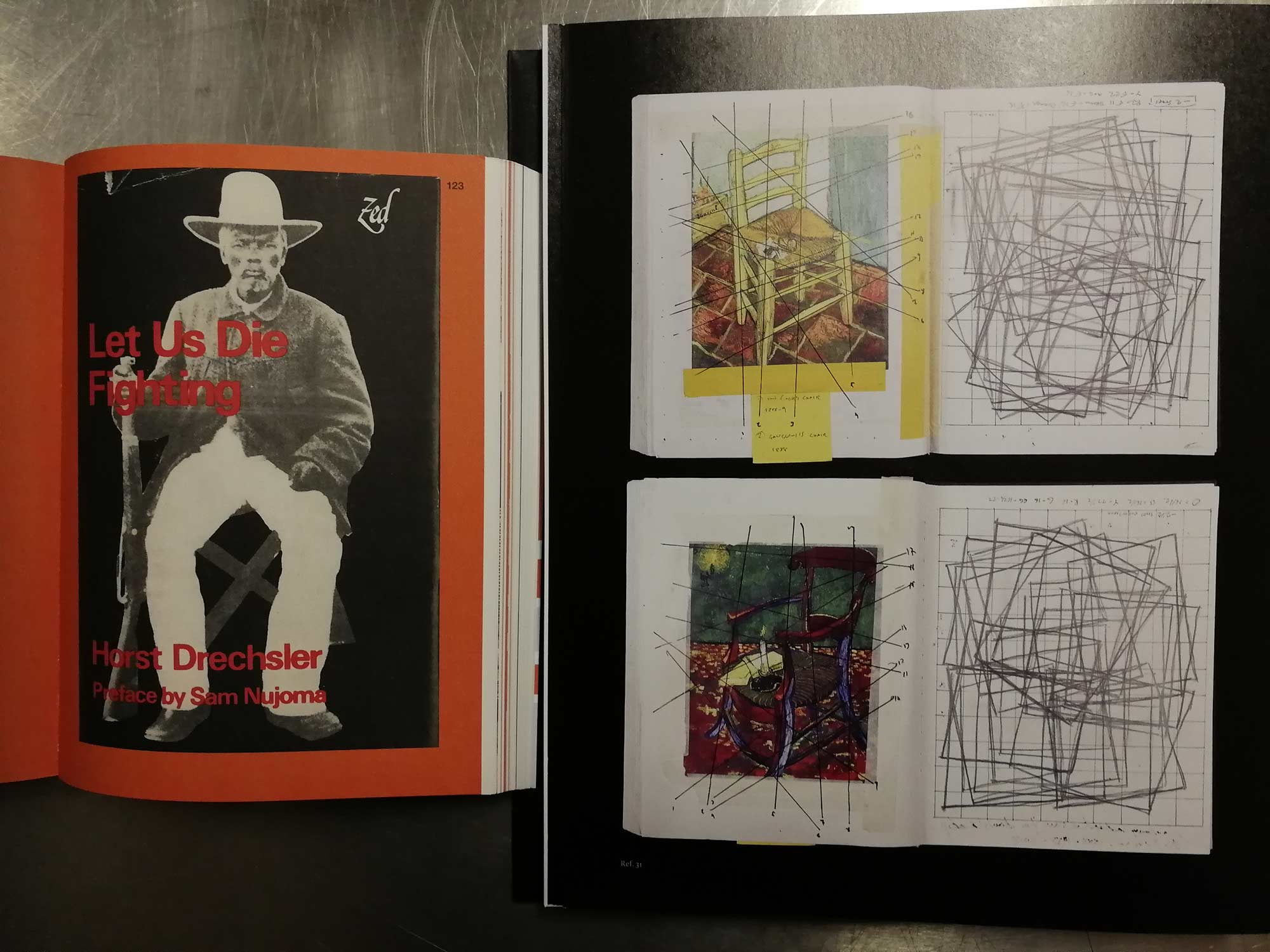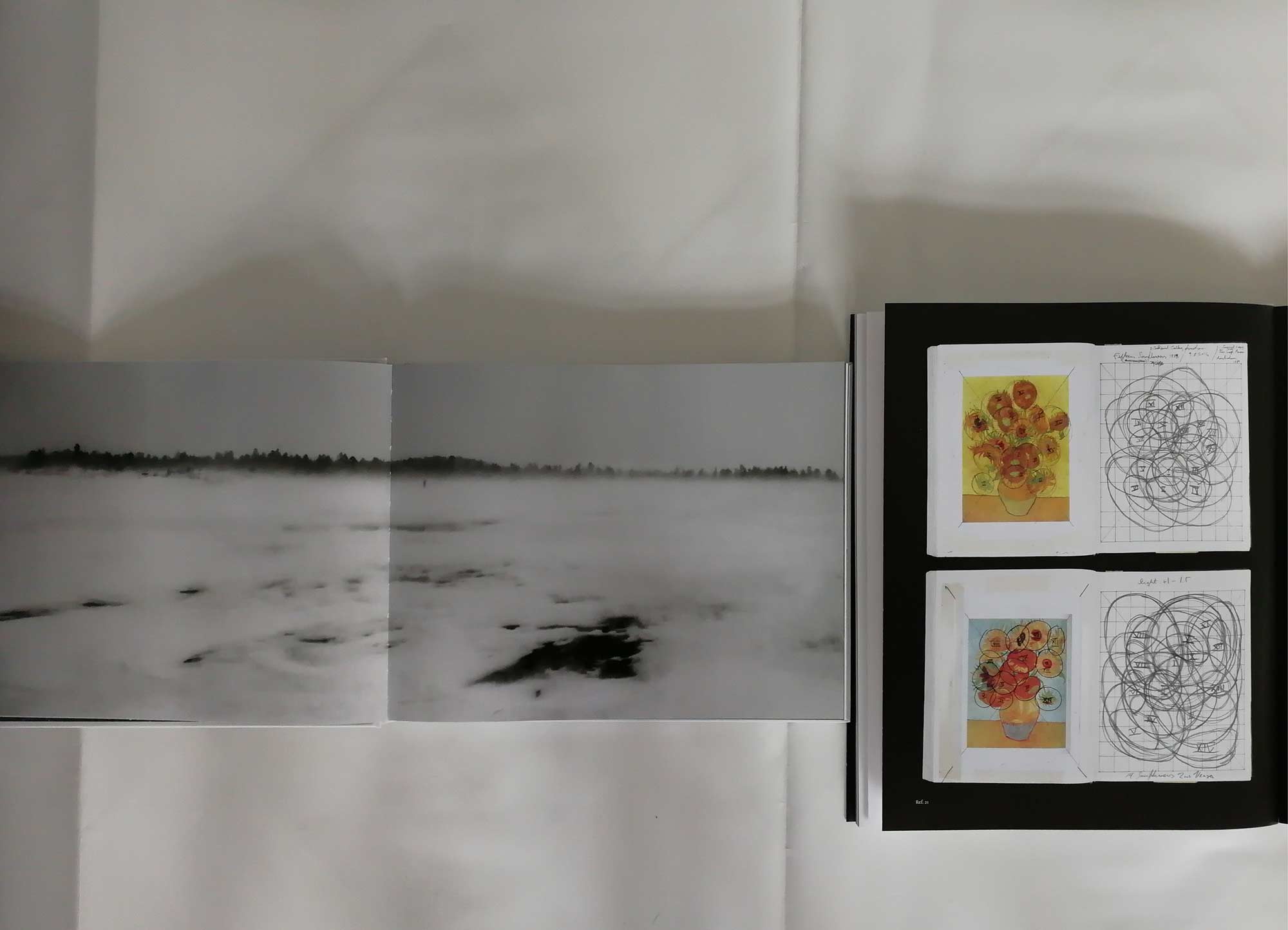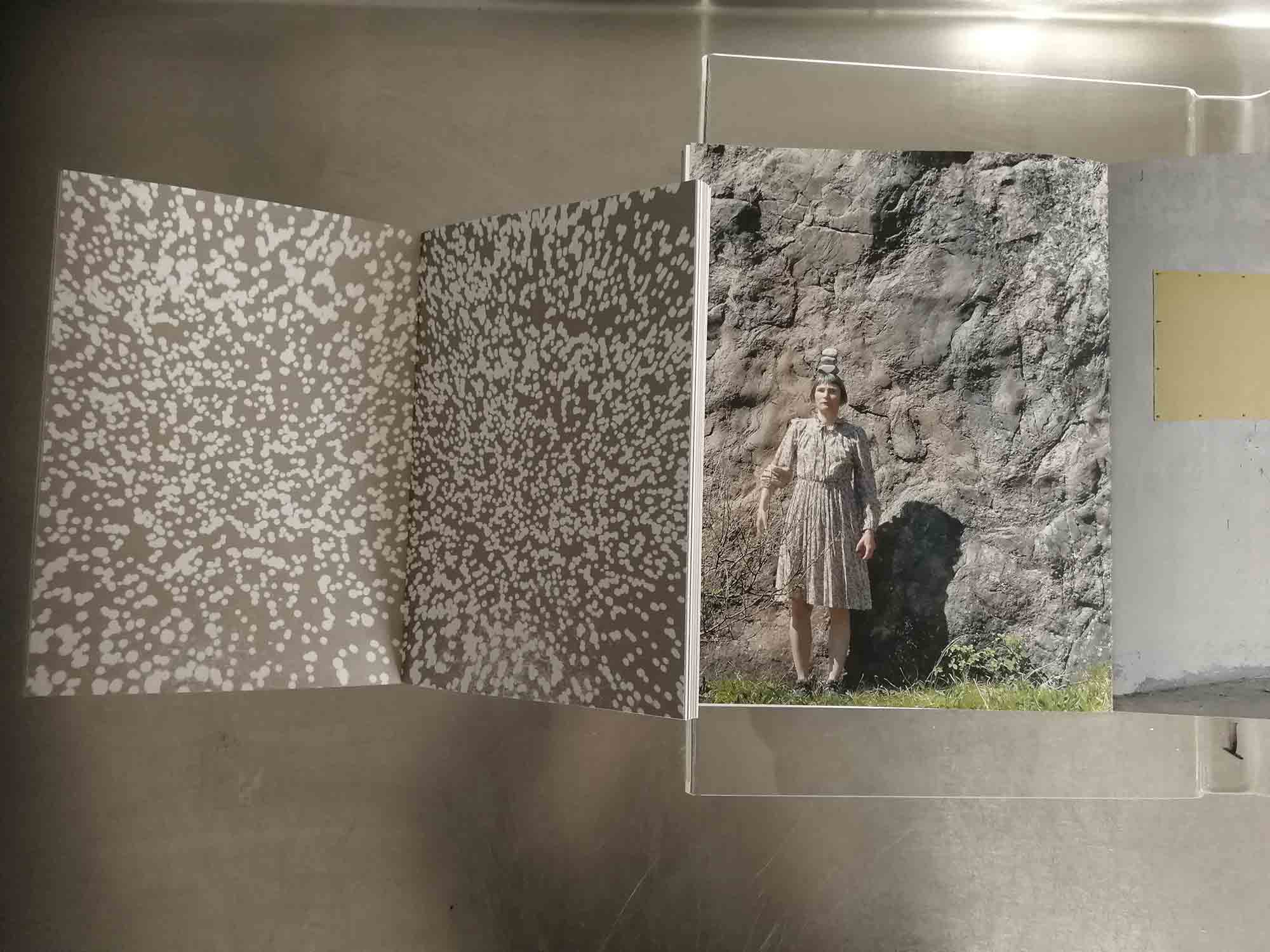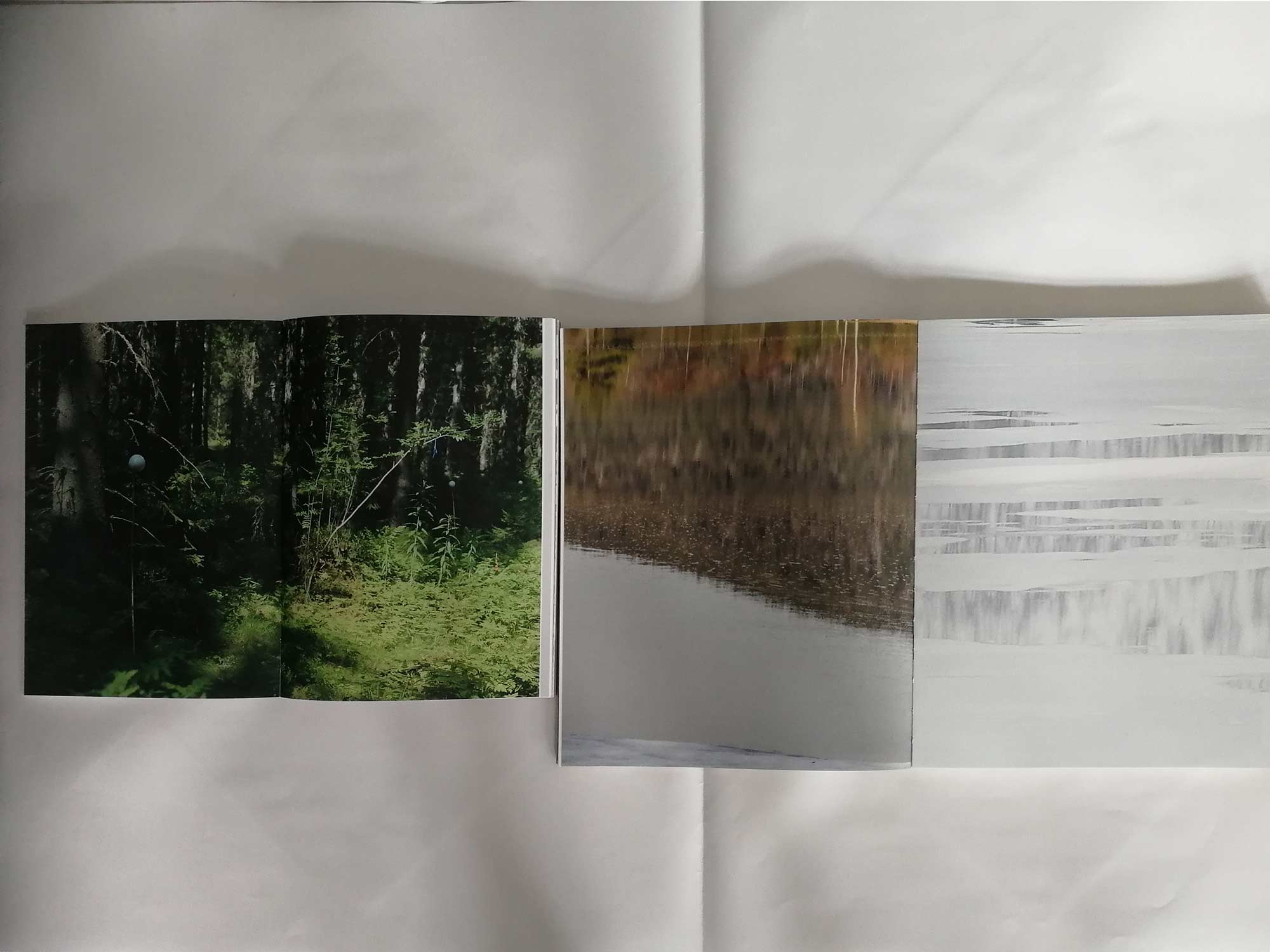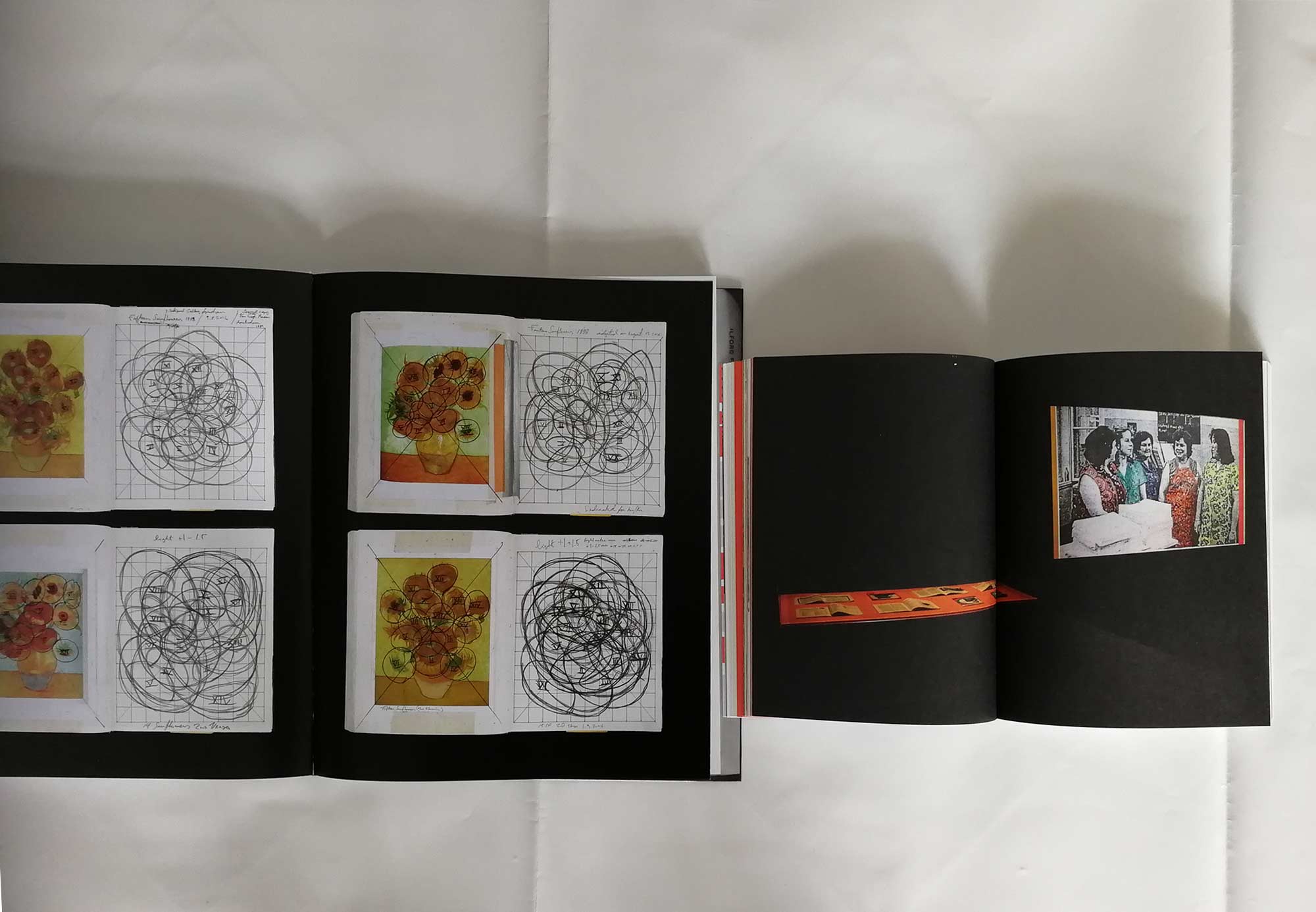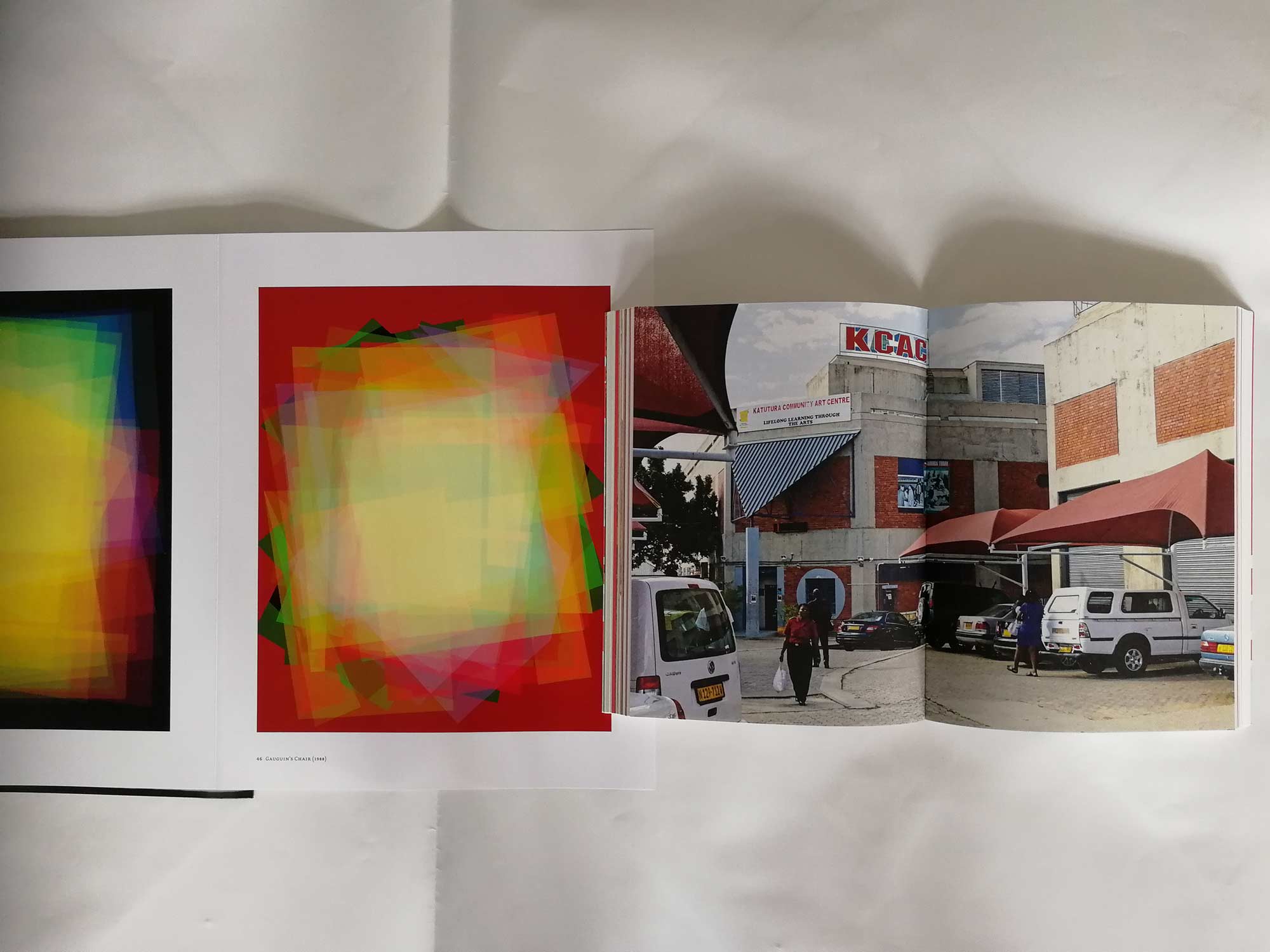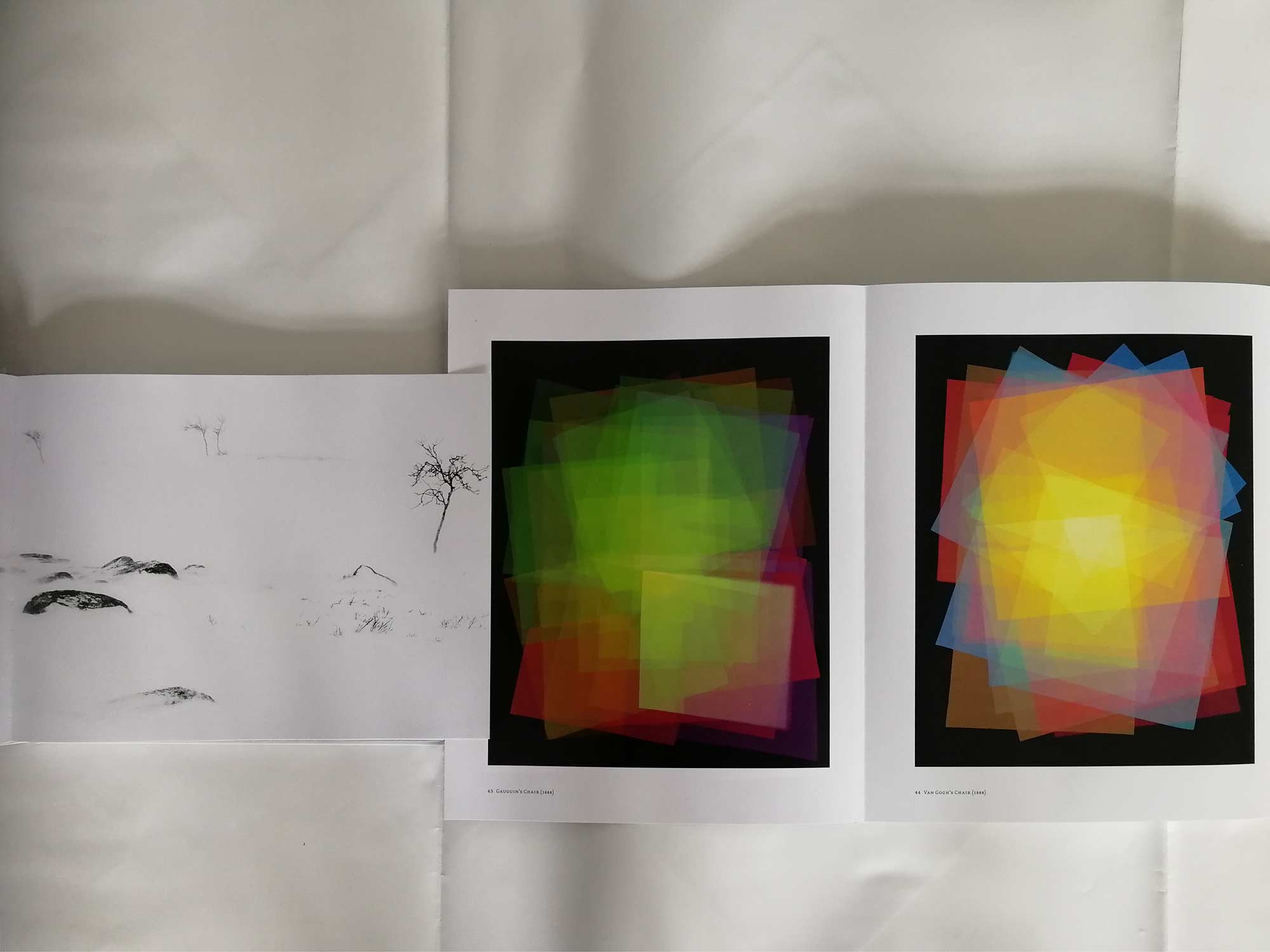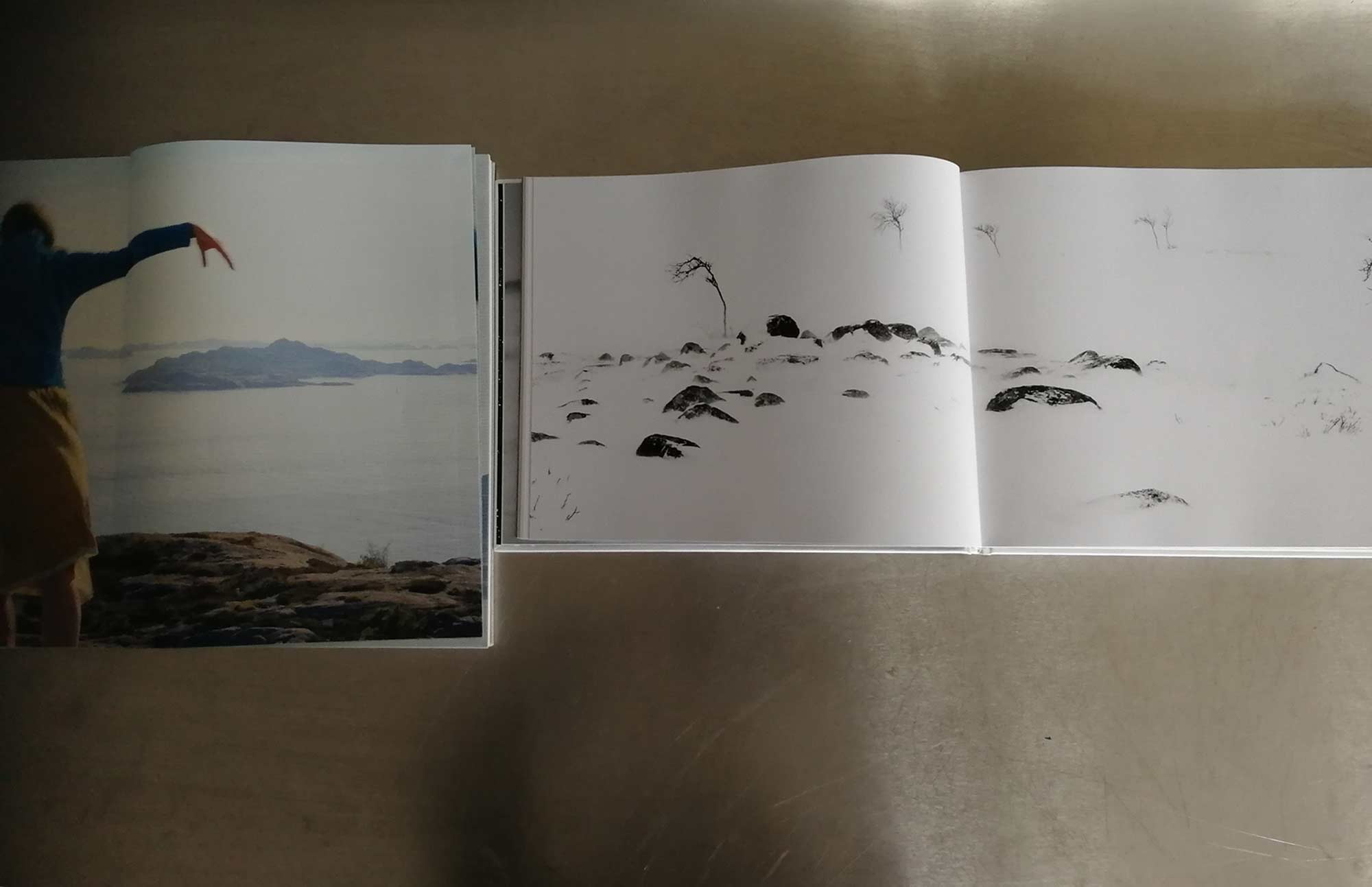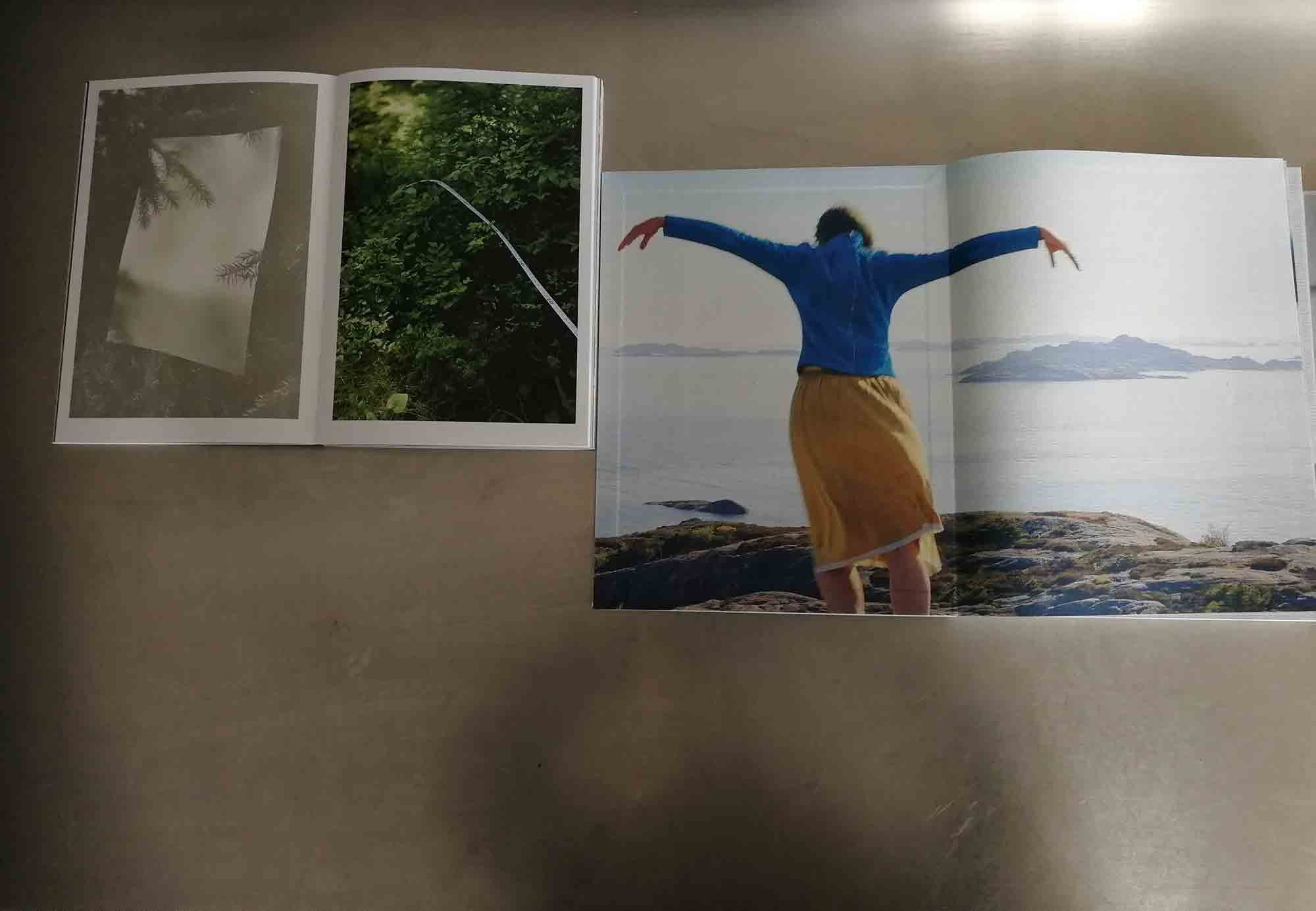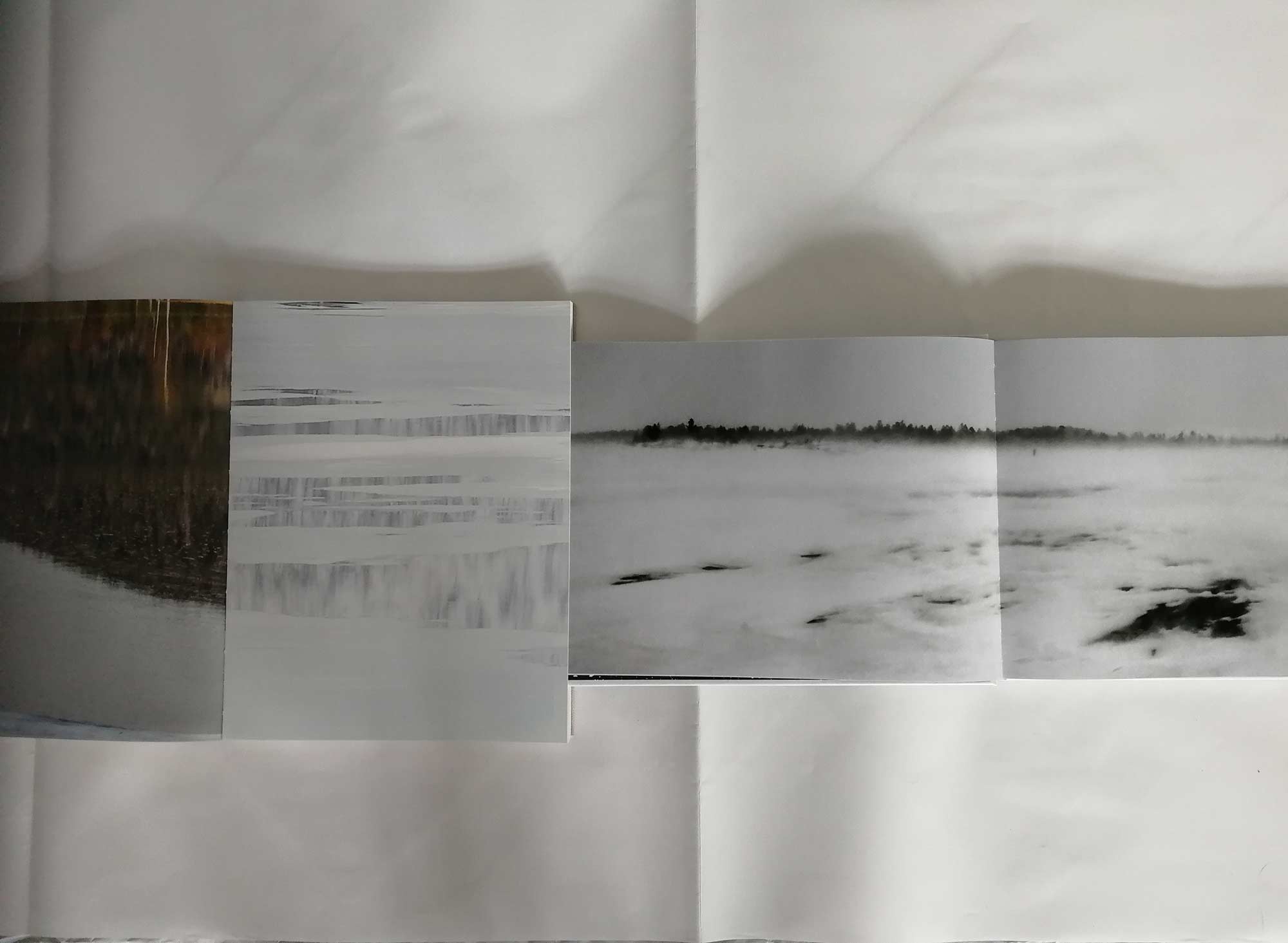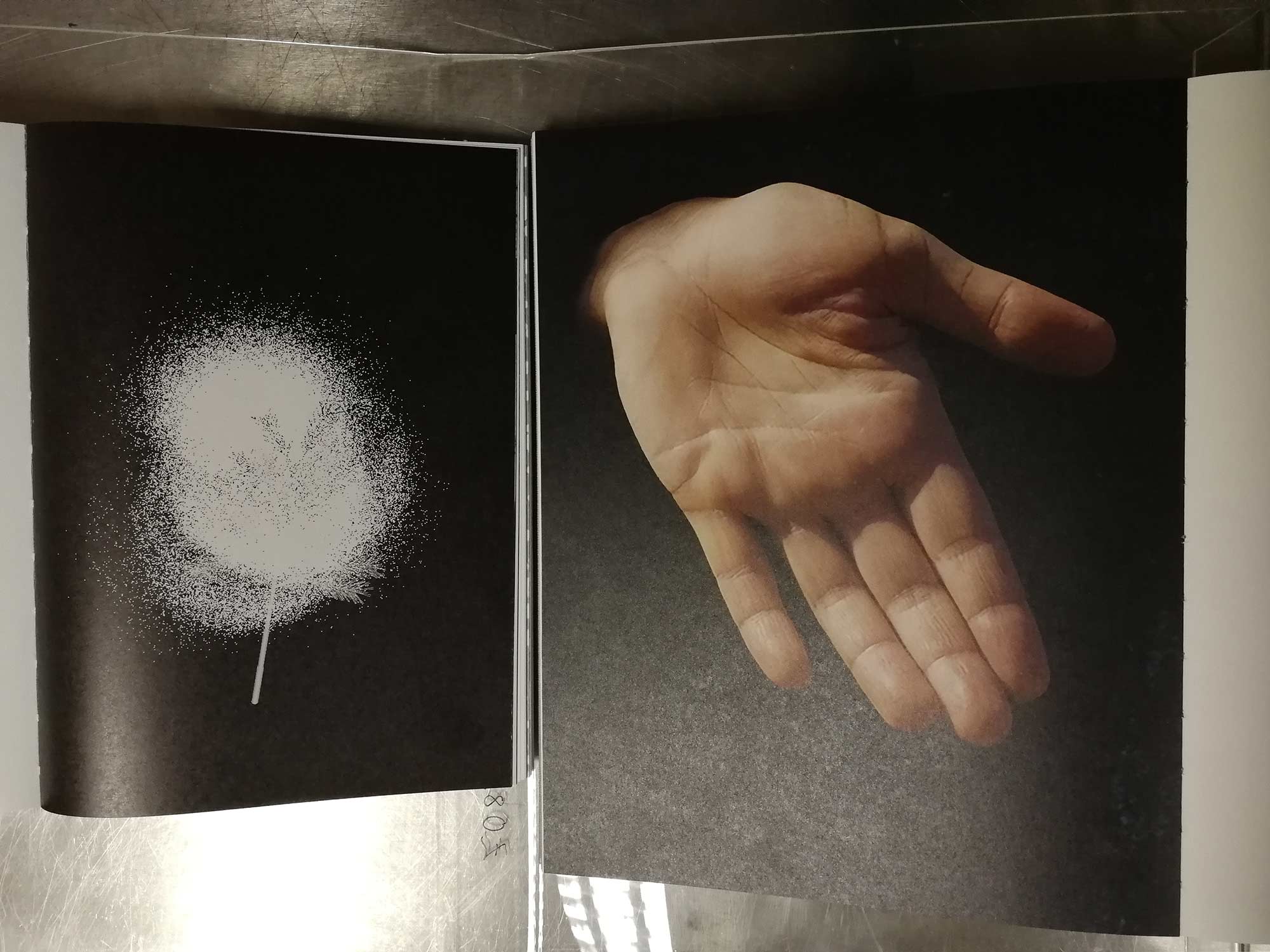
treebook, waterbook, snowbook,
lightbook and lovebook of the year
paula roush
I have been given the honour to be the juror for the finnish photobook awards 2021.
The five short-listed books I received are an outstanding selection of books emerging from issues that have dominated our lives in the past years: threats of environmental extinction and white supremacy, the growing awareness of the healing power of love and solidarity, and the urgency to decolonise art institutions. Playing with a wide range of artistic research and performative methodologies, the works enter in dialogue with a broader genealogy of fluxus performance scores, experimental art history and queer feminist philosophies. In this vein, we may choose to look at what they have in common and consider them as five volumes of a common posthuman ecological narrative, consciously aware of our bodies’ deep entanglement with other bodies of water, sweat, skin, sea, snow, wind, continents, soil, trees, seeds, leaves, paper. Photographic apparatuses can be used as measuring instruments of perception, power, and control. Or, alternatively, as they are proposed in these books, as productive, creative forms of measuring life as collective, participatory morethanhuman publishing formats.
In a project such as a photobook award, it is super important to articulate the common genealogies of photobook publishing and experimental publishing and be transparent as to one’s position in the publishing chain of command. To situate myself, the final juror, it might be useful to reveal that publishing has been part of my artistic practice, since 2003, year I was commissioned by iniva, the London-based institute of international visual arts to be part of their Soft Season dedicated to artists that curate. I used the commission budget to publish two books: “Work & Beauty” and “Out/sourcing.”[1] Since then, publishing has been increasingly entangled with my artistic practice. To the point that the acronym msdm - mobile strategies of display & mediation- is both the manifesto for the house-studio-gallery I founded and its imprint, msdm publications.
The studio is equipped with photography digital devices (cameras, computers, scanners, printers) as well as book art equipment (binding kit, paper stocks, paper cutting and folding tools), and the bookworks guided by hybrid publishing formats that fuse digital with hand made. There are so many scales of publishing in the long tail of publishing,
[2] from small presses and micro-publishers that practice publishing as alternative practices, to macro-publishers, large presses that publish on an industrial scale, that it becomes important to start by situating my position as artist-publisher, who has been photographing and designing books as two integrated facets of the same practice. Because these methods of production influence the way I appreciate photobooks, or photobookworks,[3] as I like to designate them.
I wrote an essay outlining the 5 anchors of such practice, following a residency with the Beirut-based Arab Image Foundation[4], where I spent some time in 2015 exploring the potential of their photographic collections as source for photobook publishing.
For the sake of transparency, I share these 5 anchors here, since they are the same I use in my appreciation of the short-listed books.
They are:
Photographic collection: use of the group/series/sequence formula to handle a large number of photographs and create moments in the visual narrative, that manifest archival typologies, serial movement and develop non-linear montage;
Story-showing: layout strategies that visualise the narrative around distinct materialities of paper, printing technologies, vernacular publishing references, colour space, page size and formats that analogise the essence of the work;
Photo-text: combination of photographs with text and typography for creative, disruptive reading strategies that open the work for process-based inter-textuality;
Haptic mode: the multi-sensorial identity of the book object that engages readers’ felt sense, for intuitive, playful non-rational, emergent modes of reading;
Visual structure: developed in the book dummy, three-dimensional model and tool that integrates photographic and book art processes as timespacematter, blending digital tech with a hand made aesthetics of spontaneity.
I am also interested in social publishing, facilitate courses on photobook publishing, and regularly run low-cost experimental publishing workshops that support art and humanitarian organisations, collaborating with artists to publish their photographic collections. It was through the Page-turner workshop project[5] run in partnership with the Photobook Week Aarhus that I met Henna Hari who invited me to run the same workshop in partnership with the Association of Visual Artists and the Finnish Museum of Photography and be juror in this Award. In the workshops, before we start folding paper, we sometimes link publishing to the metaphysical notion of interbeing,[6] by reading Thich Nhat Hanh words: “If you are a poet, you will see clearly that there is a cloud floating in this sheet of paper. Without a cloud, there will be no rain; without rain, the trees cannot grow; and without trees, we cannot make paper. The cloud is essential for the paper to exist. If the cloud is not here, the sheet of paper cannot be here either. So, we can say that the cloud and the paper inter-are.”
Although selecting a book from a very strong short-list can be potentially frustrating, I am proud to announce five special mentions that highlight particularly exciting features in each project, where there is an emergent condition to suggest these might even become five categories for future editions of the Finnish Photobook Award. These special mentions are: treebook, waterbook, snowbook, lightbook and lovebook of the year. Can you imagine what happens when tree and book become one? Body and water merge into one? Snow and ice melt into paper? Light becomes page spread? Love is published as unlimited edition? You will find versions of these ideas in the five books.
The prize of the Photobook of the Year, is split between Sheung Yiu, Ground Truth, and Elina Brotherus, Seabound. A logbook. Two books about our relationship to the the world - forest / sea- relying on playful, affective and experiential modes of knowing place.
Sheung Yiu, Ground Truth, reconfigures traditional landscape photography- through a multi-scalar perspective, going between a fac-simile except of ‘The art of Scenic Photography’ (1982) and data collected through 3-d modelling. ‘From needles to landscapes.’ The corporeal presence of the researchers, sweat and technological apparatus, contrasts with 3-d rendering of trees raising questions about the survival of trees, our survival, under the capitalocene,[7] a period of geopolitical time started in 1492 with imperialism, colonialism, slavery, genocide, appropriation of natural resources, the origin of the current ecological crisis.
Elina Brotherus, Seabound. A logbook is connected to a residency by the sea in Kristiansand, Norway. Two plates sections, stage actions inspired by Kurt Johannessen’s Exercises books and other event scores related to Yoko Ono and John Baldessari practices; these are complemented with a logbook, that maps the everyday minutae of preparing performance for the camera whilst opening oneself to indeterminacy. Take this book to the sea. Place it between two rocks. Go deep into its pages. Close your eyes[8] . A beautiful book to enact our relation to water through daily practices.
Going forward, my very humble first suggestion, is to expand the Finnish Photobook Award into five new categories that are not in the photobook awards circuit yet, [9] but if we combine the materialities of “tree,” “water,” “snow,” “light” and “love” with the medium “book,” we have 5 new categories, treebook, waterbook, snowbook, lightbook and lovebook (all single words, like photobook is a single word). If you are a poet, you can see that tree and water and snow and light and love and book inter-are. This expansion may be complemented by a second very humble suggestion to relax all rules that may contribute to institutionalise what are independent publishing practices. Let more books in, eliminate the need for ISBNs, accept smaller editions, and allow more indie self-publishing practices to be visible in the museum (and sold in the museum shop).
Special mention: treebook of the year
and Winner of PhotoBook of the Year:
Sheung Yiu, Ground Truth
To reward a book that is an homage to trees and ways to photograph them beyond limiting notions of landscape photography
Special mention: waterbook of the year
and Winner of PhotoBook of the Year
Elina Brotherus, Seabound. A logbook.
To reward a book in which water and body, contribute equally to the work, within a genealogy of score -based artists books.
Special mention: snowbook of the year
Marko Hämäläinen, Hiljaisuus liikkuu tuulessa / Silence Moves with the Wind
To reward a book engaged with snow, meeting the universe in the turbulent flow of water.
Special Mention: lightbook of the year
Niko Luoma, For Each Minute, Sixty-Five seconds
To reward a book that transforms art historical breakthroughs into revelations of light assemblages
Special mention: lovebook of the year
Laura Horelli, Changes in Direction – a Journal
To reward a book based on international solidarity that contributes to decolonial publishing practices.
[See The Photobook Award 2021 page here]
[1] Out/ sourcing (msdm publications: 2003) is available at the Helsinki-based Publics Library. See: https://www.libib.com/u/publics?id=65780761
[2] See “The scales of publishing. Conversation between paula roush and lara gonzalez, walking from ə /uh/-books project space (School of Arts and Creative Industries/ LSBU) to offprint book fair https://www.msdm.org.uk/uh-books-1
[3] The organisers used interchangeably “photobook,” “Photo Art Book” and “Photographic Art Book” whilst I tend to stick to the terms “photobook” (one single word), “bookwork” (one single word) and “photobookwork” (one single word), following Alex Sweetman 1986 study: Photographic Book to Photobookwork: 140 Years of Photography in Publication (California Museum of Photography Bulletin: Vol. 5)
[4] Torn, Folded, Curled: Orphan photographs sourced from the Arab Image Foundation Crafting an archaeology of the recent past, one photobookwork at a time by paula roush. Available at https://www.msdm.org.uk/essay-torn-folded-curled
[5] For “Page-turner” photography, the book & self-publishing, see https://www.msdm.org.uk/page-turner
[6] Thich Nhat Hanh, Peace Is Every Step The Path of Mindfulness in Everyday Life (1991), p.105
[7] Capitalocene (Jason Moore term), or Chthulucene (Donna Haraway term), also known as Anthropocene
[8] My own instructions based on [1999] Kurt Johannessen, Exercises books
[9] The Paris Photo/Aperture Foundation Photobook Awards has three categories: First PhotoBook, PhotoBook of the Year, Photography Catalogue of the Year. See https://aperture.org/editorial/a-look-inside-the-shortlisted-titles-for-the-2021-photobook-awards/
The Rencontres d'Arles Book Awards three categories are: Author Book Award, Historical Book Award, Photo Text Book Award. See https://www.rencontres-arles.com/en/prix-du-livre/
